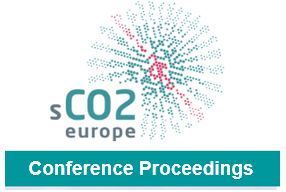Experimental and Numerical Study on Thermal Hydraulic Performance of Trapezoidal Printed Circuit Heat Exchanger for Supercritical CO2 Brayton Cycle
The supercritical carbon dioxide (sCO2) Brayton cycle is the preferred power cycle for future nuclear energy, fossil energy, solar energy, and other energy systems. As the preferred regenerator in the cycle, the printed circuit heat exchanger (PCHE) exhibits a high heat transfer efficiency, compactness, and robustness. The structure design of its internal flow channel is one of the most important factors to enhance the heat transfer and reduce pressure loss. In the present work, trapezoidal channel structure is developed and its thermal–hydraulic performances are compared with the straight, the S-shape, and the zigzag structures. Further, a trapezoidal PCHE prototype is manufactured and experimentally studied as a regenerator in the sCO2 test loop. The overall heat transfer coefficient exceeds 1.10 kW/(m2·K) and reaches a maximum of 2.53 kW/(m2·K) with the changes in the inlet temperature, the working pressure, and the mass flow rate. Correlations of the Nusselt numbers are proposed on both sides, with the Reynolds numbers ranging from 10,000 to 30,000 and 4800 to 14,000, and the Prandtl numbers ranging from 0.91 to 1.61 and 0.77 to 0.98 on the cold side and hot side, respectively. The pressure drop of the channels calculated by the peeling method using a single-plate straight prototype is less than 7 kPa and 15 kPa on the hot and the cold side, respectively. The heat recovery efficiency is analyzed to evaluate the performance of the PCHE used as a regenerator. Finally, simulation works are carried out to verify the experimental results and expand the Reynolds numbers ranging from 3796 to 30,000 and 1821 to 14,000, on the cold side and hot side, respectively. This work provides the test methods and experimental correlations for the development of an efficient PCHE in the sCO2 Brayton cycle.
Vorschau

Zitieren
Rechte
Nutzung und Vervielfältigung:
Dieses Werk kann unter einer Creative Commons Namensnennung 4.0 Lizenz (CC BY 4.0)
Creative Commons Namensnennung 4.0 Lizenz (CC BY 4.0)
genutzt werden.
